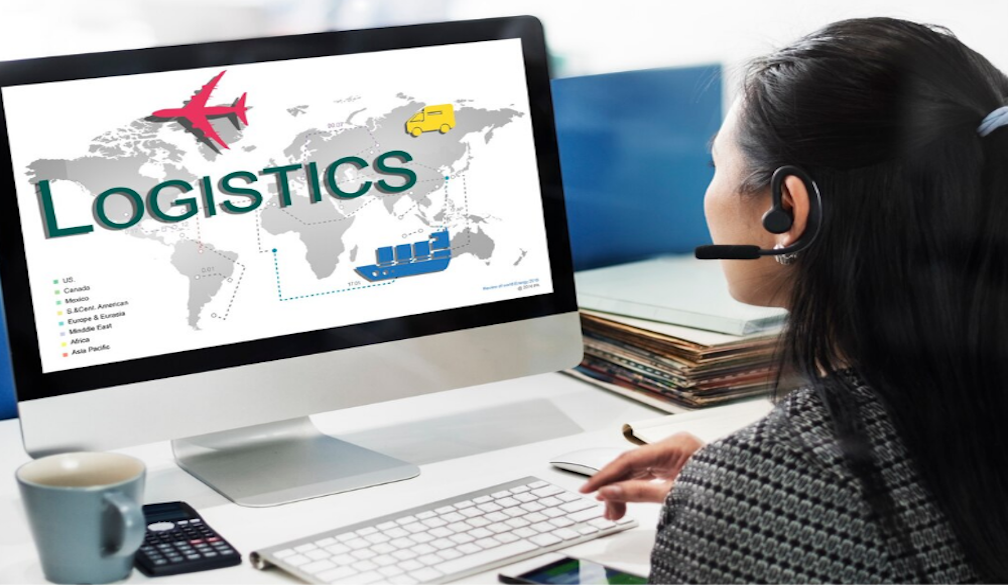How Australian Logistics Firms are Rationalizing Operations Using Mobile Applications
- Written by Bhumi Patel

In as economically and geographically heterogeneous a nation as Australia, logistics is crucial to the maintenance of the economy. From high-density urban terminals to mining towns deep in the outback, well-managed networks of logistics is the go-to solution for efficient delivery of goods, raw materials, and machinery. To meet evolving demands, many logistics companies are turning to a mobile app development company to build custom solutions for real-time tracking, fleet management, and operational efficiency. With increased costs of doing business, labor shortages, and requirements for real-time monitoring of delivery, logistics businesses have never had their backs against the wall more to be creative.
mobile apps—a technology disrupting the logistics game of logistics players. From real-time vehicle tracking to warehouse automation and customer interaction, mobile apps are making Australian logistics players leaner, smarter, and agile. Let us see how mobile apps are streamlining all the touchpoints of the logistics business and how the digital revolution is keeping the industry in the limelight in an on-demand economy fast on the rise.
Real-Time Visibility and Fleet Management
Live truck tracking is the most dominant feature of mobile logistics applications. They are linked with telematics and GPS systems to provide logistics managers and dispatchers a real-time map view of vehicle locations, routes covered, fuel usage, and delivery status. As part of comprehensive transportation and logistics software development services, these solutions help detect traffic jam delays, eliminate downtime, and redirect trucks in real-time to avoid bottlenecks.
In addition to location tracking, mobile apps monitor the way in which the drivers drive—braking, speeding, etc., their activities causing safer driving and improved maintenance timetables for the vehicles. Such transparency used to be reserved for large-scale enterprise systems, but now is being extended even to medium-sized logistics firms.
Last-Mile Delivery Optimization
The last mile—transporting goods to where they are going to be consumed—is typically the most challenging and costly element of the logistics network. Traffic, customer availability, and time windows in cities like Sydney and Melbourne are part of this.
Mobile apps overcome this constraint by offering dynamic route planning, real-time updates of delivery status, and electronic proof of delivery (ePOD). By using these applications, drivers can use them to capture the recipient's signatures, scan barcodes, and indicate delivery status in real time. Customers on their behalf are also automatically notified so that they may track the package, re-direct delivery time, or leave delivery instructions.
This simplifies the delivery process, reduces the opportunity for failed deliveries, and enhances customer satisfaction.
Empowering Warehouse and Inventory Management to be More Efficient
Cell phones are transforming warehouses by making inventory management a paperless activity and automating the processing of stock. Warehouse workers can scan barcodes, process picking lists, and perform live inventory counts on cell phones—without fixed terminals or paper files.
Through correlating and synchronising data from a group of WMS-enabled devices, mobile apps make inventory updates faster, reduce touches by people, and facilitate faster order fulfilment rates. Responsiveness in real-time within high-speed distribution centres might translate to making or missing same-day ship deadlines.
Boosting Driver Communication and Job Dispatching
For truck drivers, smartphone applications were more than directions—today, they are command centres in their own right. The driver's smartphone screen displays route assignments, job details, delivery points, and customer contact information. Dispatchers are able to request status, send assignments out, or ask for delivery confirmation with in-app message functionality without phone or radio communications.
These communications hardware are especially well worth their time where cell coverage just so happens to be bad in remote areas and rural counties. Offline work is the norm with most logistics programs nowadays, caching route information and auto-syncing when data connectivity is re-enabled once more, so no one's activities ever get disrupted.
Automating Compliance and Documentation
There is no compromise on conformance in the transport logistics business in Australia. Vehicle inspection, load weight, chain of responsibility (CoR), and fatigue management must be controlled by logistics providers. Conformance is easy through mobile applications, where vehicle inspection checklists, driver logs, and load documentation can be automated.
Pre-trip inspections can be done, product images can be captured, and digital documents can be completed via mobile phones. Not only is compliance in transportation in a country guaranteed, but also paper delays in reporting are avoided. Real-time notification for cases of non-compliance can be made accessible to managers so they may act immediately.
Developing Operational Flexibility with Data Integration
Mobile logistics applications are no longer stand-alone systems—they're core components of joined-up digital universes. Cloud services are widely used by logistics players to bring mobile applications into alignment with enterprise resource planning (ERP), customer relationship management (CRM), and transport management systems (TMS).
At this combined level, firms can merge data from functions like dispatch, warehousing, finance, and customer service in real time to support cross-functional working and real-time decision-making. For example, a delayed unloading can be triggered in the application and cloned at the same time in the ERP system to notify customer care teams to re-book delivery slots or notify receivers in advance.
One of the most significant drivers of this integrated change is the rise of specialised providers with transportation and logistics software development services that allow firms to design and implement integrated systems that improve visibility, coordination, and customer experience across the logistics value chain.
Maximizing Vehicle Maintenance and Minimizing Downtime
Breakdowns induce logistics activity into stasis. To prevent this, logistics operators are filling their mobile apps with predictive maintenance features. The apps read sensor data from vehicles—e.g., engine temperature, fuel level, and brake pressure—and compare such readings in order to predict imminent breakdowns before they happen.
Service history and maintenance records are logged inside the app, which reminds fleet managers when their company cars are serviced or due for servicing. It cuts shutdowns to save money, puts the fleets on the road more frequently, and lengthens the life of the vehicles. With such huge driving distances in Australia, the condition of the cars isn't just cost-saving—it's a necessity.
Winning Over Customers and Being More Transparent
Today's consumers are not only demanding speedier delivery, but today's consumers demand transparency. Today's customer usability of smartphone apps includes real-time visibility, the ability to provide ratings, and the ability to reach drivers or dispatchers. Customers may be alerted that the package is on its way, view an estimated time of arrival (ETA), or a photo of the package being brought up to the doorstep.
This openness eradicates customer worry, minimises support calls, and boosts brand loyalty. For logistics operators competing in a tough market, outstanding customer experience is the differentiator, and more and more, mobile apps are the ideal means of providing it.
Customisation and Scalability Through Development Partnerships
Not every career path in logistics is created equal. There won't be a one-size-fits-all app that's going to have enough real estate in its workflow for cold chain logistics, freight forwarding, and cross-dock logistics. It's all about bespoke mobile app design.
Start-up logistics companies are collaborating with experienced mobile app development company experts possessing extensive knowledge of the distinctive operational, technical, and regulatory needs of the Australian market. Such partners help build scalable, user-friendly, and secure apps that are tailored to meet the multiple supply chain processes, ranging from goods receipt to ultimate-mile delivery.
These integrations render mobile apps not just helpful but also future-proofed—capable of accommodating IoT sensors, route optimisers, and machine learning engines as the logistics tech ecosystem evolves.
Utilizing Analytics for Real-Time Optimization
With every scan, route update, or delivery confirmation, logistics applications are generating useful data. It can be utilized to find trends, bottlenecks, and room for improvement. For example, a logistics company can observe that certain delivery areas always get delayed or some vehicles are gas guzzlers.
By examining this information, companies can guide decision-making in order to re-stage staff, avoid rush hour deliveries, or maximize driver training. In the long run, it leads to more proactive operations, reduced costs, and better service levels all around.
Resilience Through Mobile-First Operations
Mobile apps not only streamline business, mobile apps also make logistics companies more responsive. With a supply chain-disrupting world, labour shortages, and volatile fuel prices, a mobile-first infrastructure provides businesses with the responsiveness to react swiftly.
Off-premise dispatch staff, cost benefits in process automation, or the rapid up-ramping to cope with a surprise surge in demand—mobile apps are pillars of a less formalised logistics system. Flexibility of this kind is particularly useful in Australia, where distances and infrastructural shortcomings elsewhere would otherwise constrict pace and quality of service.
Conclusion
Mobile applications are the way of the times for logistics activity in contemporary Australia. For communication or driver management, or regulatory compliance, mobile technology is delivering a peck on both sides of the logistics value chain. With the world becoming more demanding and seeking speed, transparency, and reliability, mobile apps are providing flexibility, scalability, and a data-driven platform to meet the challenge for the logistics providers.
Australian logistics companies that are bringing in mobile solutions these days are not only becoming more efficient—they're fronting their companies for a more flexible world economy in the years to come.
Author Name : Bhumi Patel
Author Bio : Bhumi Patel has vast experience in Project Execution & Operation management in multiple industries. Bhumi started her career in 2007 as an operation coordinator. After that she moved to Australia and started working as a Project Coordinator/ Management in 2013. Currently, she is the Client Partner - AUSTRALIA | NEW ZEALAND at Bytes Technolab - a leading product engineering company australia, where she works closely with clients to ensure smooth communication and project execution also forming long term partnerships. Bhumi obtained a Master of Business Administration (MBA) in Marketing & Finance between 2005 and 2007.













